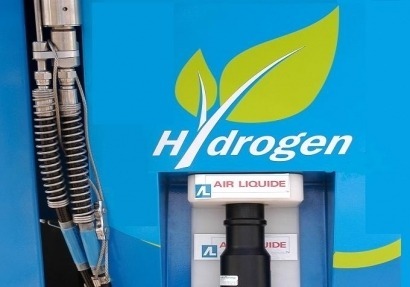The India Hydrogen Alliance (IH2A) has presented a comprehensive economic viability and development plan for a national green hydrogen hub to the Government of India, with a proposed investment of USD 5 billion. This plan, developed through public-private partnerships, aims to establish five major National Green Hydrogen Corporations by 2030.
The plan emphasizes the need for public financing support to facilitate green hydrogen production and ensure a robust infrastructure during the initial period from 2024 to 2030. Additionally, the national hydrogen corporations created as a result of this initiative are intended to be publicly listed, enabling them to secure funding for future investments and accelerate the growth of the hydrogen economy.
IH2A has submitted the USD 5 billion National Green Hydrogen Hub Economic Viability and Development Plan to key government bodies, including the Prime Minister’s Office (PMO), Cabinet Secretariat, and the Ministry of New and Renewable Energy (MNRE) within the Government of India.
Jill Evanko, Chief Executive and President of Chart Industries (NYSE: GTLS) and a founding member of IH2A, expressed her thoughts on the plan, highlighting its significance for the development of a sustainable and thriving green hydrogen sector in India.
India has the potential to lead the way in green hydrogen development by leveraging the collaboration between the public and private sectors, thereby sharing the risks and rewards of project development. The sustained support of public finance for national hubs is crucial to ensure their financial viability. It is recommended that India announce the establishment of at least one large-scale green hydrogen hub during the upcoming G20 Summit.
Implementing this approach would yield significant benefits for the Indian government, enabling the creation of a National Green Hydrogen Unicorn within the next seven years.
The National Green Hydrogen Hub Economic Viability and Development Plan took inspiration from the Green Kochi Hydrogen Hub (GKH2), which served as a reference economic model. GKH2, established as a 50:50 public-private Special Purpose Vehicle (SPV), features a 150 MW Electrolyser Capacity, Storage and Evacuation Infrastructure, Renewable Energy inputs, Green Ammonia production plants, and offtake by industrial and mobility users. The project requires a capital expenditure (CAPEX) of USD 468 million over a 20-year project period.
The Plan proposes the development of similar large-scale Green Hydrogen Hubs in Gujarat, Maharashtra, Karnataka, Tamil Nadu, and Andhra Pradesh.
Singh Deo, Senior Managing Director at FTI Consulting and IH2A Secretariat lead, discussed the preparation of the National Green Hydrogen Hub Economic Viability and Development Plan. The economic modeling is based on certain assumptions regarding public finance incentives, renewable energy costs, end-use offtake, and project structuring in the form of public-private partnerships. The model is replicable and demonstrates the feasibility of designing and constructing financially viable green hydrogen projects. Techno-commercial studies can provide further support and accelerate project development.
IH2A has submitted proposals for state-level green ammonia and hydrogen hubs to Gujarat, Maharashtra, Andhra Pradesh, Karnataka, Kerala, and Tamil Nadu. The proactive preparation of the National Green Hydrogen Hub Economic Feasibility and Development Plan by the India Hydrogen Alliance (IH2A) aims to expedite the commercialization of hydrogen.
- Our correspondent







